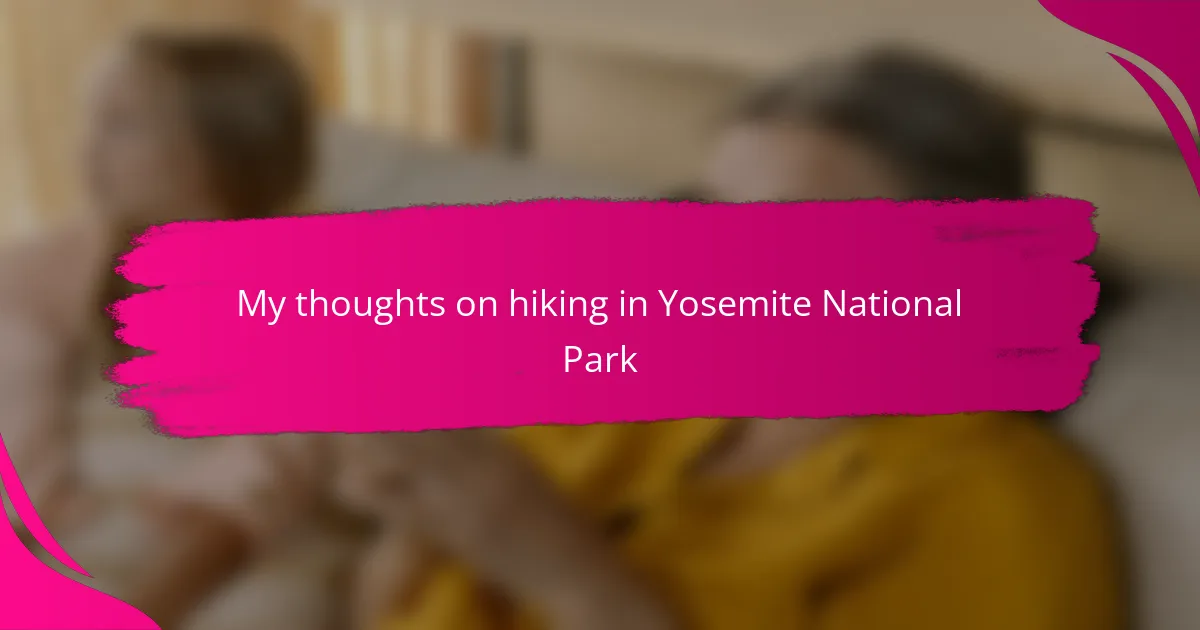Key takeaways
- Hiking fosters family bonding by encouraging communication, teamwork, and shared experiences away from distractions.
- Preparation for hikes enhances children’s confidence and self-awareness, making them feel capable and eager to explore.
- Safety is paramount; teaching kids about boundaries and preparing for minor injuries helps build confidence during outdoor activities.
- Choosing suitable trails based on family preferences ensures enjoyable and memorable experiences while considering the children’s energy levels.
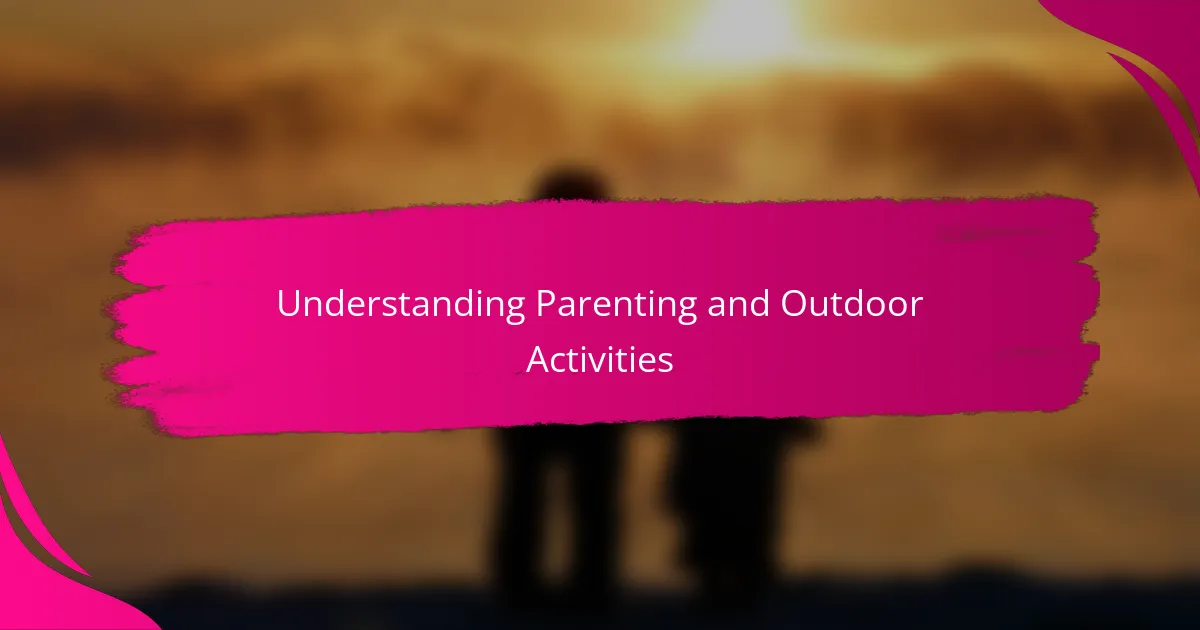
Understanding Parenting and Outdoor Activities
Balancing parenting with outdoor activities often feels like a puzzle to me. How do I keep my kids safe while letting them explore freely? Over time, I’ve realized that understanding this balance is about trusting both their curiosity and my instincts.
There’s something deeply rewarding about seeing my children’s faces light up when they discover a new trail or spot a bird. These moments remind me that parenting isn’t just about protection but also about fostering independence and resilience in them.
Have you ever noticed how nature naturally encourages patience and attentiveness? When we spend time outdoors together, it’s like we’re all learning these valuable parenting skills alongside each other, making the experience meaningful on so many levels.
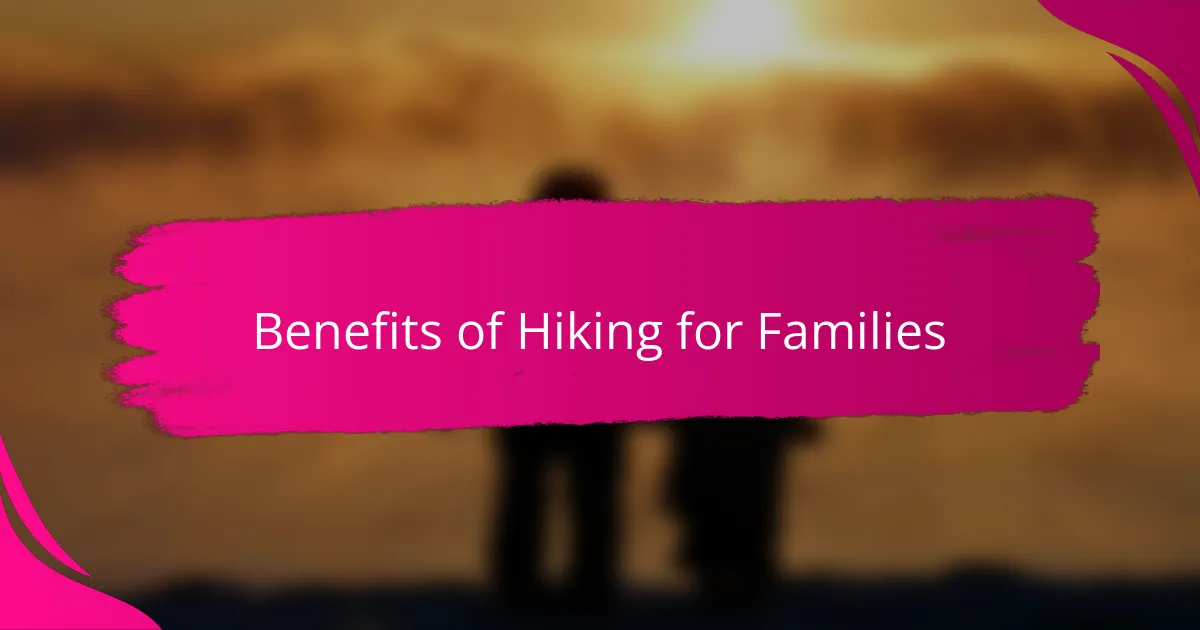
Benefits of Hiking for Families
One of the biggest benefits I’ve found in hiking with my family is how it naturally brings us closer. When we’re out on a trail, away from screens and schedules, conversations flow more easily—sometimes about silly things, sometimes about hopes and worries. It’s those simple, uninterrupted moments that deepen our connection in a way that busy days just can’t.
Have you ever noticed how a shared adventure, like reaching a viewpoint or crossing a stream, creates a sense of teamwork and accomplishment? Watching my kids cheer each other on, even when they’re tired, has shown me how hiking builds important life skills like cooperation and determination. Those lessons stick far beyond the trail.
I also love how hiking teaches patience and mindfulness for all of us. There were times when my children wanted to rush ahead, but I encouraged them to slow down and really take in their surroundings—like the sound of birds or the feel of moss underfoot. Those pauses became moments of calm and wonder that I treasure as much as they do.
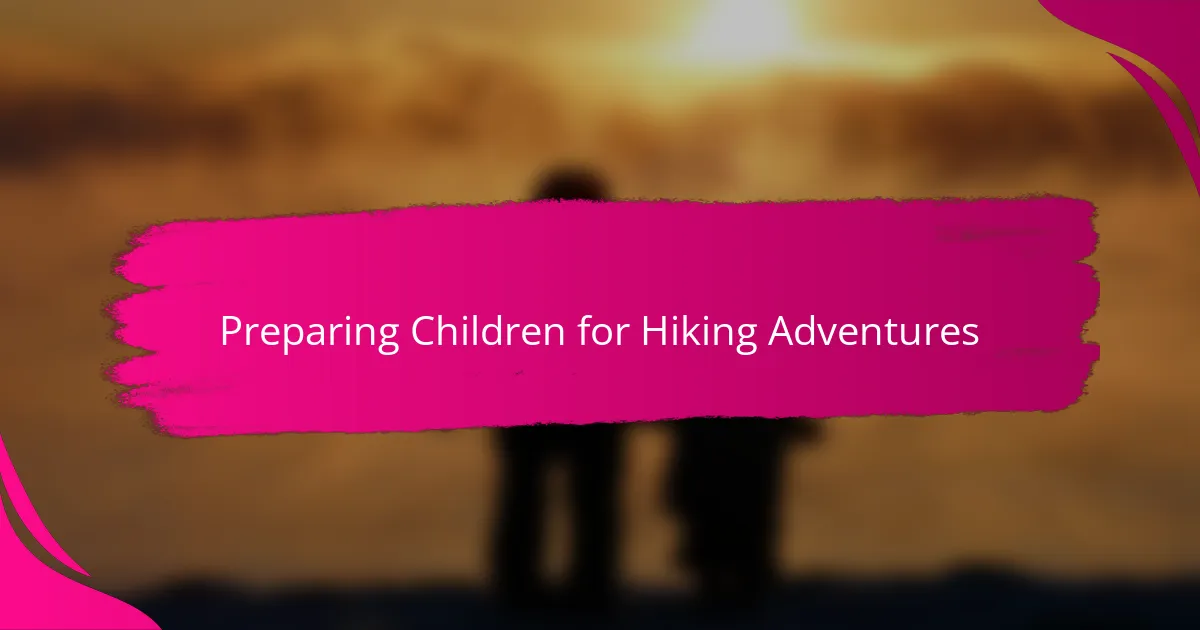
Preparing Children for Hiking Adventures
Getting children ready for hiking trips is a bit like packing their backpacks – it takes thought and a bit of practice. I’ve found that talking through what to expect on the trail helps ease their worries and builds excitement. Have you ever noticed how kids light up when they know they’re part of the plan, not just along for the ride?
I remember the first time I let my little one carry their own water bottle. It was a small thing, but it gave them a big boost of confidence. Preparing kids isn’t just about gear or snacks; it’s about helping them feel capable and eager to explore. That feeling stays with them long after the hike ends.
One thing I always emphasize is pacing. Kids can get tired quickly, so I ask, “How does your body feel?” This simple question turns hiking into a conversation about listening to oneself. It’s a lesson in self-awareness that I think is invaluable, both on and off the trail.
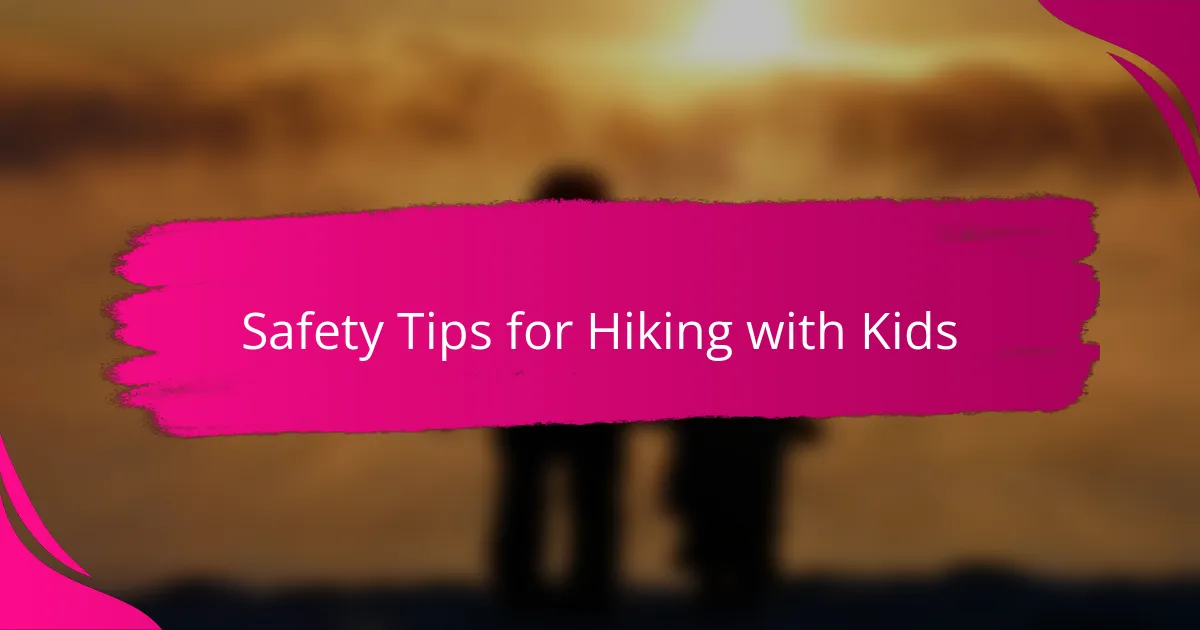
Safety Tips for Hiking with Kids
One thing I never skip is teaching my kids to stick close, especially on rocky or crowded parts of the trail. Have you ever felt that moment of panic when your child wanders off a bit too far? That gentle reminder to stay within sight not only keeps them safe but also helps them learn about boundaries in a calm, positive way.
I always pack a small first-aid kit and show my children how we can handle little scrapes together. There was this one time my daughter scraped her knee, and sitting down to clean it became a chance for comfort and calm rather than fear. Moments like that remind me how being prepared makes both of us feel more confident and ready for anything.
Another safety habit I’ve found valuable is setting clear expectations about trail rules before we start. Talking about why we don’t touch plants or wander off the path turns safety into a shared responsibility. When my kids understand the “why,” they often surprise me by reminding each other gently—and that teamwork feels like a real win on every hike.
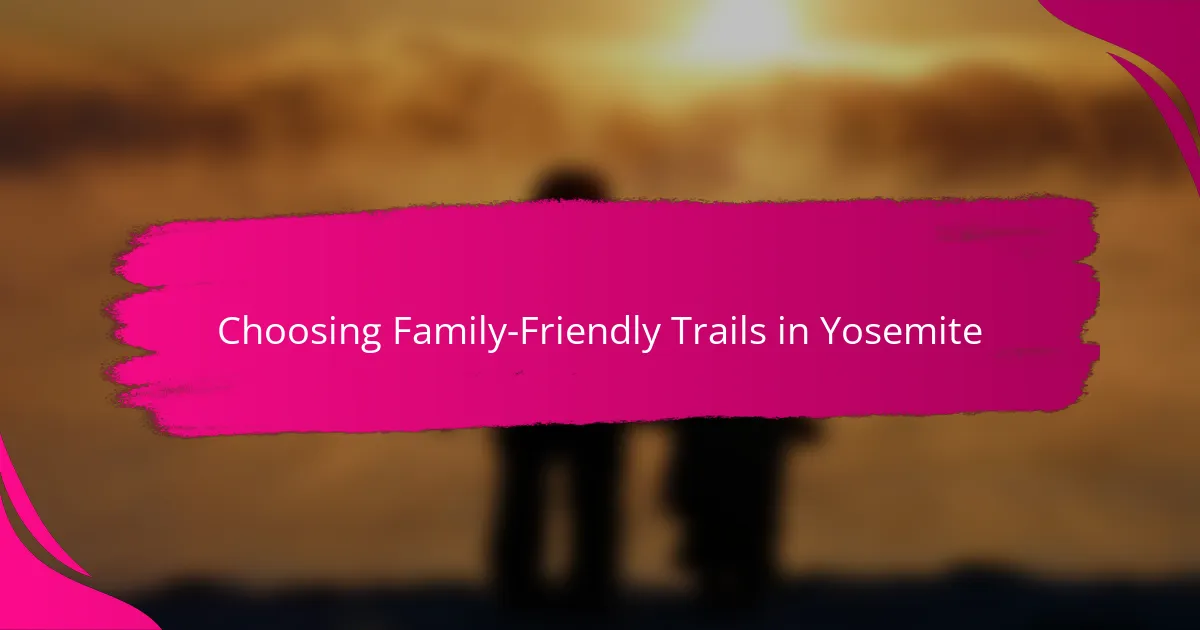
Choosing Family-Friendly Trails in Yosemite
Picking the right trail in Yosemite for a family hike always feels like a balancing act to me. I want something manageable so my kids don’t get overwhelmed, but still exciting enough to keep their curiosity alive. Have you ever tried choosing a trail and worried if it’s too long or too steep? For us, trails like the Lower Yosemite Falls or Mirror Lake strike that perfect balance—they’re scenic but not too challenging, which makes the adventure enjoyable for all of us.
I’ve also learned that paying attention to the trail length and elevation gain is key when planning with little ones. When my children were younger, a short, flat trail meant they could explore at their own pace without getting exhausted or frustrated. On one particular hike to the Bridalveil Fall, we took it slow and made frequent stops to admire the views and feel the mist—it became less about reaching the destination and more about soaking in those special moments together.
Sometimes, choosing family-friendly trails means prioritizing shade and places to rest. Yosemite can get hot during the day, and I noticed that shaded paths near the Merced River helped our kids stay cool and energized. Does your family prefer trails with picnic spots or little streams to splash in? For us, those simple comforts make a huge difference in how pleasant and memorable the hike feels for everyone.
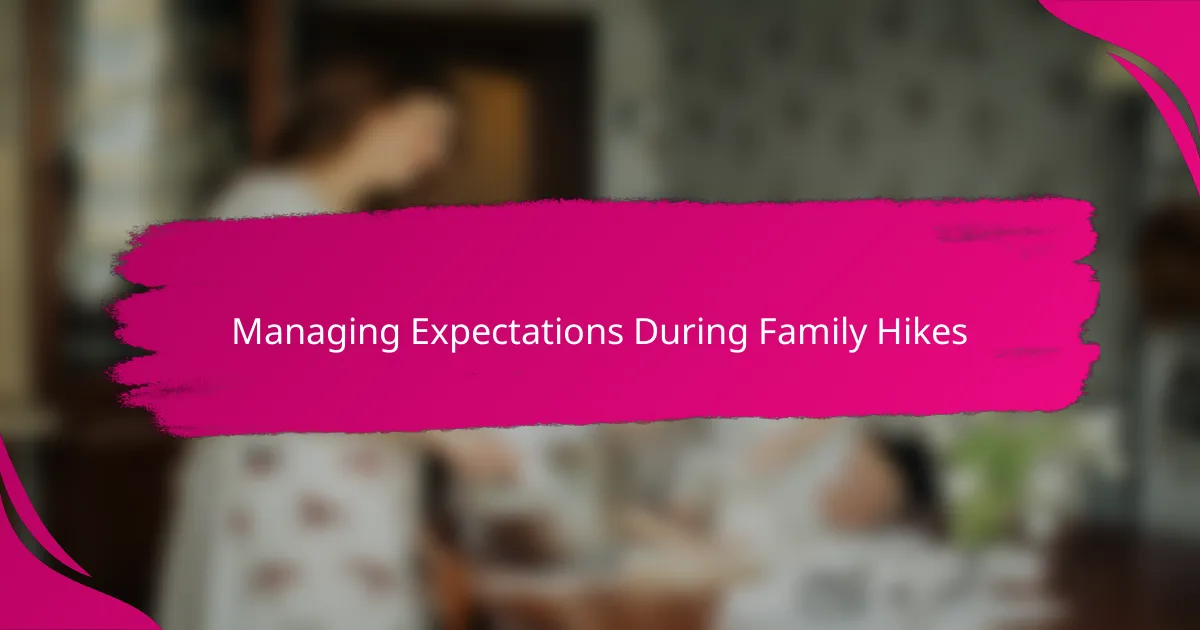
Managing Expectations During Family Hikes
Managing expectations during family hikes has become one of my top priorities, especially after a few trips where I underestimated my kids’ energy levels. Have you ever planned a long trail only to have everyone turn grumpy halfway through? I’ve learned that accepting shorter distances or slower paces allows us all to enjoy the experience more and reduces frustration.
I remember a particular hike when my youngest insisted on stopping every few minutes to examine a bug or pick up a pebble. At first, I was anxious about the lost time, but then I realized those pauses were the moments they would remember most. Letting go of rigid plans and embracing these natural breaks has made our family adventures richer and more relaxed.
Setting clear, realistic goals before hitting the trail also helps a lot. We talk about what to expect—whether that means “we’ll walk for one hour” or “there’s a flat path with benches along the way”—so my kids can mentally prepare. Does this sound familiar? That simple conversation often turns worries into excitement and makes the hike feel like a shared mission, not a surprise test.
